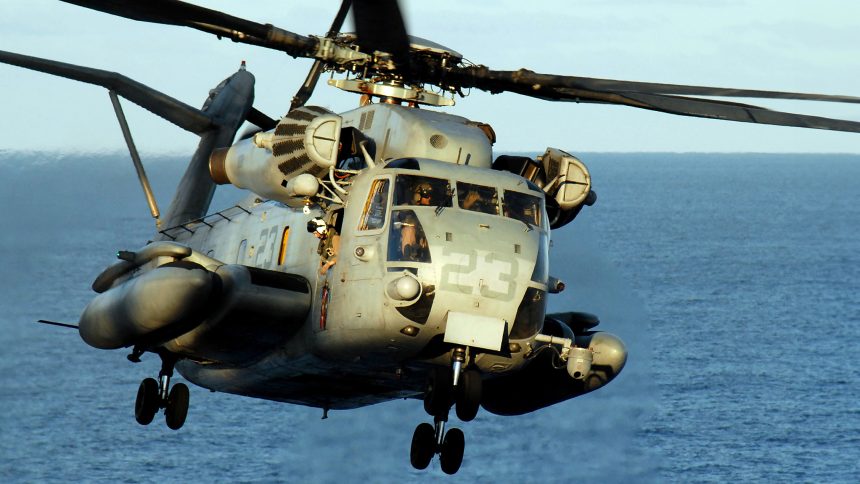Reminiscent of early-World War I bomber tactics, the Navy has tested hand-deploying sonobuoys from the CH-53E heavy-lift helicopter.
Announced on Sept. 27, 2024, the United States Navy said it had “recently” tested hand-deployment of sonobuoys from a Sikorsky CH-53E Super Stallion as the service explores new tactics for a potential fight in the Pacific. The test consisted of a crewmember throwing the sonobuoy out of the open cargo door in the rear of the aircraft.
The helicopter, flying as part of Air Test and Evaluation Squadron Two One (HX-21), teamed up with Heavy Lift Helicopters Program Office (PMA-261) and Air Anti-Submarine Warfare Systems Program Office (PMA-264) for the test. The test was also overseen by the H-53 Lead Test Engineer, Adam Chesser.
“We evaluated the procedures and separation characteristics to ensure the sonobuoys would not strike the aircraft when launched,” said Chesser. “Clearing the heavy lift aircraft for sonobuoy deployment creates another level of redundancy for the Navy and provides more resources and flexibility to complete the mission.”
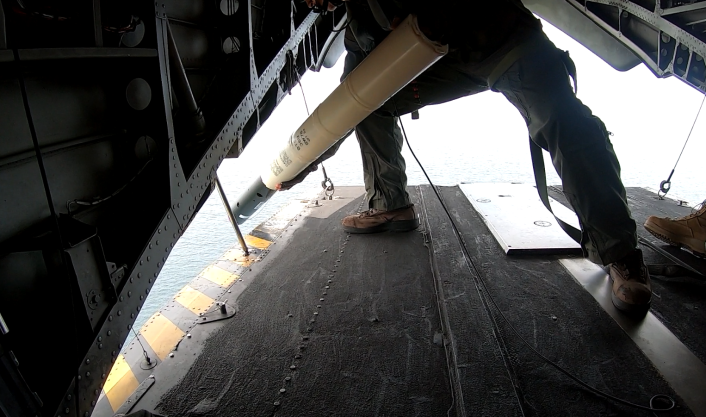
“The H-53 is purpose-built to carry heavy loads, but that’s not the limit of our operational relevance,” said Colonel Kate Fleeger (USMC), the Program Manager of the Heavy Lift Helicopters Program Office (PMA-261). “This test is just one example of the untapped capabilities of the H-53. Future payloads and the evolution of the H-53 in the battlespace are limited only by our imagination.”
The sonobuoys are typically deployed from purpose-built “submarine hunters” such as the Lockheed P-3 Orion and its replacement, the Boeing P-8 Poseidon, or the rotary-wing Sikorsky MH-60R Seahawk. The devices are launched in canisters and deployed upon landing in the water. The purpose of the device is to send acoustic data from underwater to a receiver that stays on the surface and communicates the data to the aircraft. They’re also deployed in a similar manner as the test from the decks of ships.
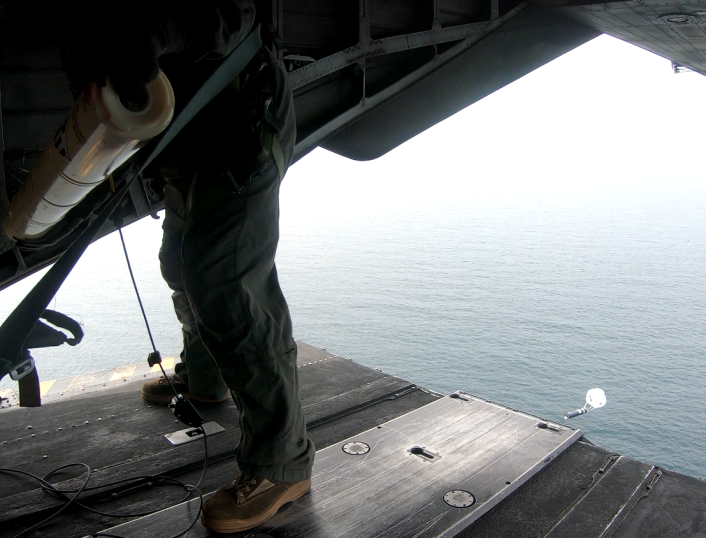
Air Test and Evaluation Squadron Two One (HX-21), based at Naval Air Station Patuxent River, Maryland, has been the Navy’s rotary-wing test squadron since its inception in 1949. The unit operates the CH-53, V-22, TH-57, MH-60, and MQ-8 types, among others. According to their site: “The mission of Air Test and Evaluation Squadron Two One (HX-21) is to execute developmental flight test and evaluation of rotary-wing and tilt-rotor aircraft, and their associated airborne systems in support of all United States Navy and Marine Corps training, combat, and combat support missions. The goal of HX-21 is to provide the highest quality evaluation and reporting in support of the aircraft program managers and the fleet warfighters.”
The CH-53E itself is the workhorse of U.S. Navy and Marine Corps shipboard heavy lift. Flying for the first time in 1974 and being introduced into service in 1981, the helicopter has seen service with both branches and the Japan Maritime Self-Defense Force (JMSDF). The original CH-53 models flew for the first time in 1964 and are still operated by Germany, Israel, and Iran, and historically by Austria, Mexico, and the United States. The helicopter family is unique in being powered by three engines to operate its massive, seven rotor blades.
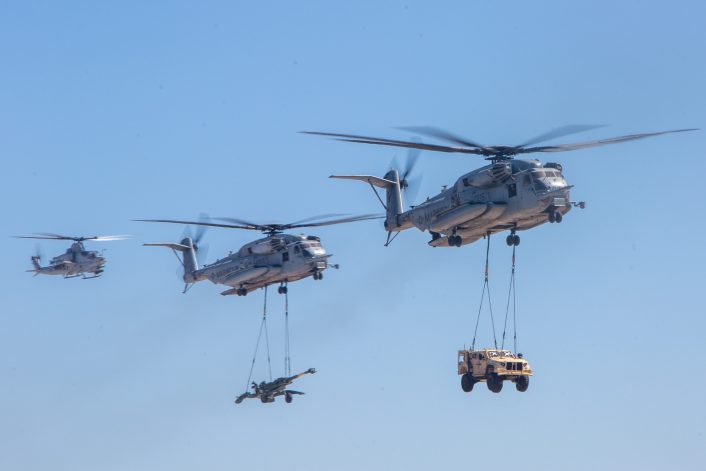
Unfortunately, the CH-53 also has a poor safety record, with a crash even occurring at the beginning of this year. The aircraft has the U.S. Navy’s worst crash record. An independent investigation by documentary filmmaker Zachary Stauffer revealed that 132 Marines and Sailors were killed between 1984 and 2019. This year’s incident makes 137 killed including the five Marines killed in February.
The Navy also announced that the test would be repeated and certified for the newer CH-53K King Stallion, which is set to replace the E-models in the coming years. The newer model declared Initial Operational Capability (IOC) in April, 2022, and is operated by the U.S. Marine Corps and soon by the Israeli Air Force. According to NAVAIR, the King Stallion almost triples the Super Stallion’s lift weight at 36,000 pounds (16,329 kg) and is designed to take up less deck space on ships. Like its predecessor, the K-model is capable of air-to-air refueling. NAVAIR also states that the aircraft is on track to deploy for the first time in fiscal year 2025. The Marine Corps plans to operate 200 of the type.
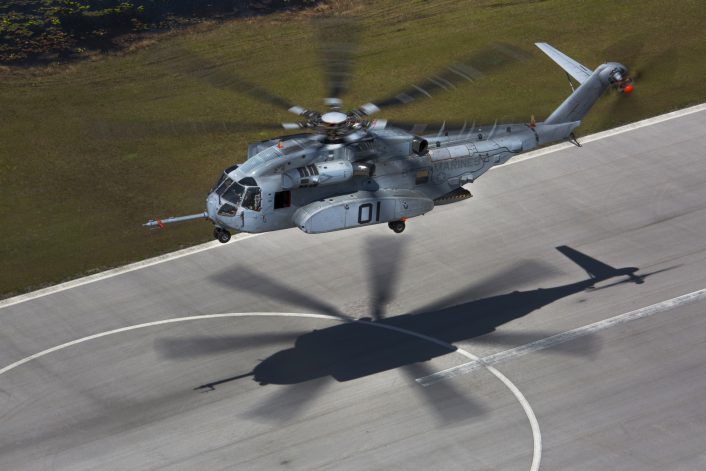
(U.S. Marine Corps photo by Lance Cpl. Molly Hampton)
The CH-53K upgrade is part of a rapid modernization by U.S. Department of Defense entities as it shifts from fighting the counter-insurgency (COIN) war in Afghanistan to a potential “near-peer” fight in the Pacific. The modernization has seen sweeping changes across the United States military, which has recently involved the retirement of the KC-10A Extender and E-8C Joint STARS of the U.S. Air Force and a sweeping downsizing of the U.S. Marine Corps, including all of the service’s M1 Abrams main battle tanks. The latter are changes the Marine Corps sees as necessary to supporting naval expeditionary warfare.

